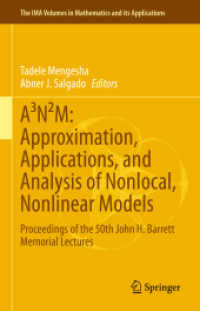- ホーム
- > 洋書
- > ドイツ書
- > Social Sciences, Jurisprudence & Economy
- > Education Science / Pedagogic
- > didactics, methodics, school education
Full Description
This book explores best practices in assessing the writing in English of native speakers of Chinese.
Assessing the English Language Writing of Chinese Learners of English edited by long-time experts Liz Hamp-Lyons and Yan Jin clearly demonstrates the authors' collective years of writing and teaching about writing assessment.








